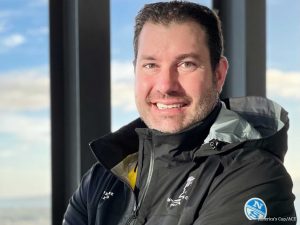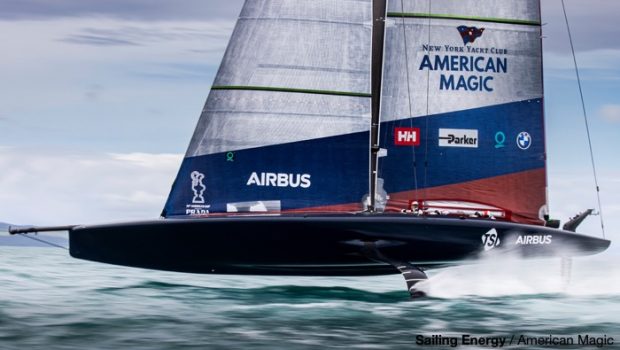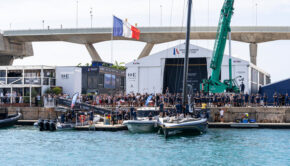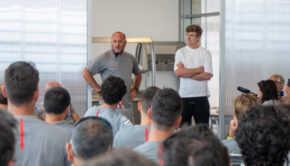Who is the America’s Cup Measurer?
Published on December 30th, 2020
The people closest to the secrets and developments of the AC75 are the measurers, and while their lips are sealed, the role is a fascinating one, from start to finish. Sailing World’s Dobbs Davis introduces AC36 official measurer, David McCollough, who is privy to all of the secrets, above under the hoods, of the AC75s.
An enduring appeal of the America’s Cup is the inherent challenge of having well-funded teams full of very smart sailors, designers, builders and technologists face off against each other in a quest for an edge in performance that is often exceedingly narrow, yet can make all the difference between winning and losing.

Whether racing in J Class yachts, 12-Metres, ultra-fast multihulls or the current foiled monohulls, any small edge in speed and maneuverability can make a huge outcome in the results.
It is this quest that drives innovation in design and fabrication, some of which may trickle down into the levels where the rest of us sail, and a team can devote enormous resources into this effort: reportedly the American Magic team logged more than 100,000 hours in design time put into their entry.
Yet how do they know the limits on how far to push? Who is it that defines and enforces these limits? And how can teams be kept within the goalposts for compliance? Not only are these tricky questions, but they have to be addressed correctly: the integrity and success of the event depend on it.
To explore these and other questions we had a chat with David McCollough, one of three members of the Measurement Committee for the 36th America’s Cup, while he was in quarantine in Auckland awaiting clearance to start working on site. He was dividing time between his family that had come with him for the next few months of the event, his ongoing projects at home with his yacht design firm McCollough Yachts in Newport, and his position as an AC36 measurer.
First, a preamble is needed on class rules. Most of us who are one-design racing know about these, and how they may (or may not) define specifications and limits to defined dimensions and materials used in the hull, appendages, rig and sails, along with other speed-producing parameters like crew weight.
Most strict one-design classes are those that permit little or no changes to approved builder-supplied parts, and many of us know how to optimize our performance within these strict rules by, for example, fairing the bottom or maximizing our crew weight.
In contrast, other classes are more relaxed and permit some development to evolve within defined limits. This is where the AC 36 Class Rule is, where some parts of the boat are one-design and provided, whereas others are allowed to vary subject to the approval of the Class Rule Committee, whose eyes and ears for interpretation and compliance are the Measurers.
McCollough’s qualifications for AC36 started from when he was employed at Morelli and Melvin during the 34th America’s Cup where the team was commissioned by Oracle to help write the Class Rule for that cycle’s event. Educated in mechanical engineering and yacht design, he said that was a cycle that showed huge development change from starting with some non-foiling boats to having all foiling boats, with the game-changer being in the details of foiling control.
He credits this time with having made the contacts and good relations with members of Team New Zealand that has led to his current appointment. “This is where I learned about how tough rule-writing really is,” McCollough said, “and how challenging the job of Measurer is in an evolving environment. This has also allowed me to appreciate the process involved in this cycle with yet another new type of boat: you often don’t know what you don’t know because no one has dealt with a boat of this type before. – Full story









 We’ll keep your information safe.
We’ll keep your information safe.